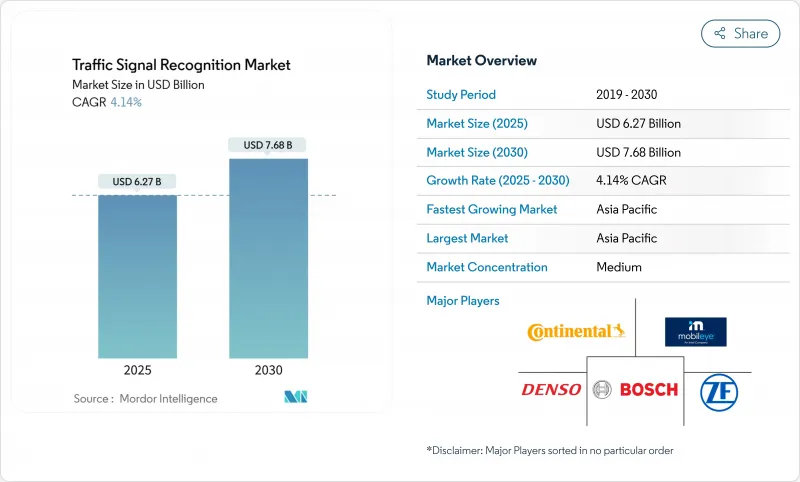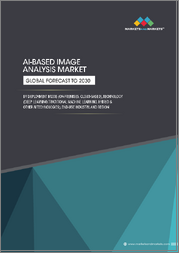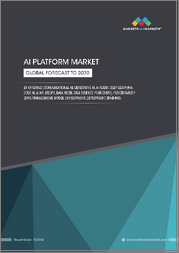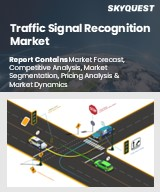
|
시장보고서
상품코드
1836498
교통신호 인식 : 시장 점유율 분석, 산업 동향, 통계, 성장 예측(2025-2030년)Traffic Signal Recognition - Market Share Analysis, Industry Trends & Statistics, Growth Forecasts (2025 - 2030) |
||||||
교통신호 인식 시장 규모는 2025년 62억 7,000만 달러에 이르고, 예측기간 중(2025-2030년) CAGR은 4.14%를 나타내, 2030년에는 76억 8,000만 달러에 달할 것으로 전망됩니다.

규제 의무화, 카메라 가격 저하, Level-2 Plus 자율성으로 프리미엄 모델 이외에도 대응 가능한 베이스가 확대됩니다. 센서 공급업체는 카메라 비용을 매우 중요한 임계값인 10달러 이하로 줄이기 위해 필요한 규모의 경제성을 원래 기기의 대수에 의해 얻을 수 있게 되었습니다. 동시에 소프트웨어의 강화로 인식 정밀도가 향상되어 보험 텔레매틱스의 스코어링이나 미래의 자율주행차 인증에 반영됩니다.
세계의 교통신호 인식 시장 동향과 인사이트
규정에 따른 ADAS 통합
제한된 규칙에 따라 교통신호 감지는 옵션 추가 기능에서 필수 안전 기능으로 변경되었습니다. 유럽 연합(EU)의 일반 안전 규칙 II(2024년 7월 발효)는 모든 신형 모델에 교통신호 입력에 뒷받침되는 지능형 속도 지원을 포함하도록 의무화하고 있으며, 동시에 자동 긴급 브레이크에 관한 NHTSA의 규칙이 지각 스위트 수요를 높이고 있습니다. OEM은 현재 미래의 규칙 제정을 예측한 확장 가능한 지각 능력을 중심으로 전기 시스템을 구축하고 있으며, 교통신호 인식 시장의 수년에 걸쳐 수요를 효과적으로 둘러싸고 있습니다.
카메라 비용 곡선이 10달러/유닛 미만
이미지 센서는 한때 선진적인 비전을 대중차에서 멀리했던 비용의 장애물을 마침내 지웠습니다. 소니의 차량용 CMOS 로드맵과 온세미의 3µm 픽셀 프로세스는 HDR을 120dB로 높이고 암전류를 28분의 1로 줄이면서 단가를 10달러 이하로 낮췄습니다. 저가격화로 OEM은 차량 1대당 8대 이상의 카메라를 배치할 수 있어 섬광, 백라이트, LED 플리커 시나리오에서 인식 정밀도를 높이는 시점을 늘릴 수 있습니다.
시야 불량이나 극단적인 날씨 하에서의 인식 불량
눈, 안개, 폭우는 여전히 카메라 장애로 인해 사회적 신용을 해치는 서비스 저하를 일으키고 있습니다. Snow-CLOCs(동계의 탐지 정밀도 86.61%)와 같은 연구실에서의 성과는 LiDAR과 카메라의 퓨전이나 서멀 오버레이에 개발자를 향하게 하고 있기 때문에 균일한 노상 성능에는 아직 연결되어 있지 않습니다. 신뢰성의 격차는 핸즈프리 법제화를 진행하기 전에 명확하게 정의된 성능 엔벨로프를 요구하는 규제 당국에 무거워집니다.
보고서에서 분석된 기타 성장 촉진요인 및 억제요인
- 레벨 2 플러스 자율주행의 보급
- V2I 대응의 동적인 표지 갱신
- 국가별 데이터 세트 검증 비용
부문 분석
컬러 기반 탐지은 2024년에 교통신호 인식 시장 수익의 46.18%를 차지했는데, 이것은 RGB 임계값을 오랫동안 사용해 온 증거입니다. 그러나 Deep-Learning Detection은 컨볼루셔널 네트워크와 트랜스포머 네트워크가 오클루전이나 변화하는 조명 하에서 뛰어난 것으로 입증되어 2030년까지 연평균 복합 성장률(CAGR) 4.71%를 나타낼 전망입니다. Deep-Learning Detection의 교통신호 인식 시장 규모는 소프트웨어로 업그레이드할 수 있는 정밀도 향상에 대한 OEM 선호도를 반영하여 2030년까지 지수적으로 성장할 것으로 예측됩니다.
YOLOv5와 어텐션 기반 네트워크는 현재 95% 이상의 정확도와 98% 이상의 예상률을 달성하면서 추론을 45ms 이하로 줄여 실시간 안전 예산을 충족하고 있습니다. 무선 파이프라인이 성숙함에 따라 자동차 제조업체는 에지 케이스 영상에서 모델을 재교육하고 하드웨어를 교체하지 않고 업데이트를 푸시할 수 있습니다. 교통신호 인식 시장은 회로 설계가 아닌 데이터 큐레이션에 차별화 요인이 있는 AI 중심 스택으로의 전환을 계속하고 있습니다.
2024년에는 카메라 시스템이 교통신호 인식 시장 수익의 63.21%를 차지했습니다. 이는 BOM 비용 저하와 고급 소프트웨어 툴의 통합으로 시스템의 효율성과 기능성이 높아졌기 때문입니다. 이 장점은 교통신호 인식 응용 분야에서 카메라 시스템의 채택이 확대되고 있음을 돋보이게 합니다. 성장률은 느려지고 있으며, 교통신호 인식에서 카메라 시스템 시장 규모는 지속적인 기술 진보에 힘입어 2030년까지 강력한 CAGR로 급증할 것으로 예측됩니다.
LiDAR과 카메라의 융합은 CAGR 4.34%를 나타내 가장 빠르게 성장하고 있는 하위 부문이며, Hesai와 같은 공급자가 솔리드 스테이트 유닛을 주류의 트림 내에 배치하는 50% 가격 인하를 계획하고 있기 때문입니다. SparseLIF와 유사한 프레임워크는 점군 지오메트리와 이미지 텍스처를 정렬하여 눈부심이나 강수로 카메라가 보이지 않는 경우에도 인식을 유지할 수 있는 중복성을 제공합니다. 레이더 지원 옵션은 위상 변화를 예측하는 속도 벡터를 추가하고 다중 센서 혼합이 교통신호 인식 시장을 어떻게 재형성하는지를 보여줍니다.
지역별 분석
2024년 교통신호 인식 시장의 매출 점유율은 아시아태평양이 38.75%로 최상위였으며, 2030년까지의 CAGR은 4.21%를 나타낼 전망입니다. 국내규제, 스마트시티시험운용, 수직통합으로 중국, 일본, 한국의 교통신호 인식 시장이 집중되고 있습니다. 심천의 V2I 회랑은 실시간 위상 맵을 테스트 차량에 공급하고 도쿄의 센서 산업은 HDR 이미저를 세계 OEM에 공급하고 있습니다. 지역의 고밀도 교통은 딥러닝의 견고성을 극복하고 세계 검증 사이클을 가속화하는 다양한 데이터 세트를 생성합니다.
유럽은 일반 안전 규정 II에 뒷받침됩니다. 콘티넨탈의 새로운 Aumovio 부서와 보쉬의 센서 퓨전 스위트가 공급을 지원하는 반면, 엄격한 사이버 보안 규칙은 데이터 처리 아키텍처를 형성합니다. 독일과 영국의 보험 텔레매틱스는 컴플라이언스가 확인되면 보수가 지급되므로 소비자 수요가 교통신호 인식 시장으로 향합니다.
북미에서는 연방정부의 안전의무화와 벤처기업의 자율주행시험으로부터 혜택을 받고 있습니다. 캘리포니아에서는 법규가 엄격하며 공급업체는 페일 세이프 성능을 문서화해야 하며, 캐나다에서는 겨울 기후가 악천후 테스트를 위한 자연 실험실을 제공합니다. 이러한 요인들이 함께 다양하면서도 서로 연결되어 있는 지역이 유지되고, 한 지역에서의 진보가 세계 분산 OEM 프로그램을 통해 다른 지역에도 신속하게 파급되고 있습니다.
기타 혜택 :
- 엑셀 형식 시장 예측(ME) 시트
- 3개월간의 애널리스트 서포트
목차
제1장 도입
- 조사 전제조건과 시장 정의
- 조사 범위
제2장 조사 방법
제3장 주요 요약
제4장 시장 상황
- 시장 개요
- 시장 성장 촉진요인
- 규제에 의한 ADAS의 흡수
- 카메라의 코스트 커브는 10달러/대 이하로 하락
- 레벨 2 플러스 오토노미의 보급
- V2I에 의한 동적 표지판 갱신
- HD 맵·디지털 트윈 구축 확대
- TSR 정확도 보상형 보험 텔레매틱스
- 시장 성장 억제요인
- 저시인성 및 극단적인 날씨 하에서의 인식 불량
- 국가별 데이터 세트 검증 비용
- 잘못된 표지판 표시에 의한 사이버 배상 책임
- OEM 예산을 경쟁 센서로 이동
- 가치/공급망 분석
- 규제 상황
- 기술적 전망
- Five Forces 분석
- 신규 참가업체의 위협
- 구매자/소비자의 협상력
- 공급기업의 협상력
- 대체품의 위협
- 경쟁 기업 간 경쟁 관계의 강도
제5장 시장 규모·성장 예측 : 금액(USD)
- 탐지 방법
- 색상 기반 탐지
- 형상 기반 탐지
- 특징/딥러닝 탐지
- 센서 기술별
- 카메라 시스템
- 레이더 보조 TSR
- LiDAR-카메라 융합
- 다중 모드
- 차량 유형별
- 승용차
- 소형 상용차
- 중대형 상용차
- 버스 및 코치
- 구성 요소별
- 하드웨어
- 소프트웨어
- 최종 사용자별
- OEM 설치
- 애프터마켓
- 지역별
- 북미
- 미국
- 캐나다
- 기타 북미
- 남미
- 브라질
- 아르헨티나
- 기타 남미
- 유럽
- 독일
- 영국
- 프랑스
- 스페인
- 이탈리아
- 기타 유럽
- 아시아태평양
- 중국
- 일본
- 한국
- 인도
- 기타 아시아태평양
- 중동 및 아프리카
- 사우디아라비아
- 아랍에미리트(UAE)
- 이집트
- 남아프리카
- 기타 중동 및 아프리카
- 북미
제6장 경쟁 구도
- 시장 집중도
- 전략적 동향
- 시장 점유율 분석
- 기업 프로파일
- Continental AG
- Robert Bosch GmbH
- DENSO Corporation
- Mobileye(Intel)
- ZF Friedrichshafen AG
- HELLA(FORVIA)
- Aptiv PLC
- Valeo SA
- Magna International Inc.
- Panasonic Holdings
- Hyundai Mobis
- Hitachi Astemo
- Veoneer/S-SW
- Ford Motor Company
- General Motors Company
- Tesla Inc.
- NVIDIA Corporation
제7장 시장 기회와 전망
KTH 25.10.27The Traffic Signal Recognition Market size is estimated at USD 6.27 billion in 2025, and is expected to reach USD 7.68 billion by 2030, at a CAGR of 4.14% during the forecast period (2025-2030).

Regulatory mandates, lower camera prices, and Level-2 Plus autonomy expand the addressable base beyond premium models. Original-equipment volumes now give sensor suppliers the economies of scale needed to hold camera costs below the pivotal USD 10 threshold. At the same time, software enhancements sharpen recognition accuracy that feeds insurance telematics scoring and future autonomous-vehicle certification.
Global Traffic Signal Recognition Market Trends and Insights
Regulation-Mandated ADAS Inclusion
Binding rules have turned traffic light detection from an optional extra into a required safety feature. The European Union's General Safety Regulation II, effective July 2024, obliges every new model to include intelligent speed assistance underpinned by traffic-signal inputs, while a parallel NHTSA rule on automatic emergency braking heightens demand for perception suites. OEMs now architect their electrical systems around scalable perception capacity that anticipates future rule-making, effectively locking in multi-year demand for the traffic signal recognition market.
Camera Cost Curve Drops Below USD 10/Unit
Imaging sensors finally cleared the cost hurdle that once kept advanced vision off mass-market vehicles. Sony's automotive CMOS roadmap and onsemi's 3 µm pixel process have driven unit prices beneath USD 10 while boosting HDR to 120 dB and cutting dark current by 28 times. Low prices let OEMs deploy eight or more cameras per vehicle, multiplying viewpoints that collectively raise recognition precision across glare, back-light, and LED-flicker scenarios.
Poor Recognition in Low-Visibility and Weather Eextremes
Snow, fog, and heavy rain still challenge cameras, creating service drops that undermine public trust. Laboratory gains such as Snow-CLOCs (86.61% detection accuracy in winter) have yet to translate into uniform street performance, pushing developers toward LiDAR-camera fusion and thermal overlays. Reliability gaps weigh on regulators who demand clearly defined performance envelopes before advancing hands-free legislation.
Other drivers and restraints analyzed in the detailed report include:
- Level-2 Plus Autonomy Proliferation
- V2I-Enabled Dynamic Sign Updates
- Country-Specific Dataset Validation Costs
For complete list of drivers and restraints, kindly check the Table Of Contents.
Segment Analysis
Color-based Detection held 46.18% of the traffic signal recognition market revenue in 2024, a testament to its long-standing use of RGB thresholds. Yet Deep-Learning Detection is rising at 4.71% CAGR to 2030 as convolutional and transformer networks prove superior under occlusion and variable lighting. The traffic signal recognition market size for Deep-Learning Detection is projected to grow exponentially by 2030, reflecting OEM preferences for software-upgradable accuracy gains.
YOLOv5 and attention-based networks now achieve more than 95% precision and over 98% recall while keeping inference below 45 ms, meeting real-time safety budgets. As over-the-air pipelines mature, automakers can retrain models on edge-case footage and push updates without hardware swaps. The traffic signal recognition market continues transitioning toward AI-centric stacks where differentiators sit in data curation, not circuit design.
In 2024, Camera Systems captured 63.21% of the traffic signal recognition market revenue, driven by declining BOM costs and the integration of advanced software tooling, which enhanced system efficiency and functionality. This dominance highlights the growing adoption of Camera Systems in traffic signal recognition applications. Despite a moderation in growth rates, the market size for Camera Systems in traffic signal recognition is projected to surge at a strong CAGR through 2030, supported by continuous technological advancements.
LiDAR-Camera Fusion is the fastest-advancing sub-segment at 4.34% CAGR as suppliers like Hesai plan 50% price cuts that place solid-state units within mainstream trims. SparseLIF and similar frameworks align point-cloud geometry with image texture, producing redundancy that sustains recognition when glare or precipitation blinds cameras. Radar-assisted options add speed vectors that predict phase changes, illustrating how multi-sensor blending reshapes the traffic signal recognition market.
The Traffic Signal Recognition Market Report is Segmented by Detection Method (Color-Based Detection, Shape-Based Detection, and Feature-Based Detection), Sensor Technology (Camera Systems, Radar-Assisted TSR, and More), Vehicle Type (Passenger Cars and More), Component (Hardware and Software), End-User (OEM and Aftermarket), and Geography. The Market Forecasts are Provided in Terms of Value (USD).
Geography Analysis
Asia-Pacific led with 38.75% of the traffic signal recognition market revenue share in 2024 and is expected to grow at a 4.21% CAGR through 2030. Domestic regulations, smart-city pilots, and vertical integration concentrate the traffic signal recognition market in China, Japan, and South Korea. Shenzhen's V2I corridors feed real-time phase maps to test fleets, while Tokyo's sensor industry supplies HDR imagers to global OEMs. Regional high-density traffic creates diverse datasets that sharpen deep-learning robustness and accelerate global validation cycles.
Europe follows, propelled by General Safety Regulation II. Continental's new Aumovio division and Bosch's sensor-fusion suites anchor supply, while stringent cybersecurity rules shape data-handling architectures. Insurance telematics in Germany and the United Kingdom reward verified compliance, channeling consumer demand into the traffic signal recognition market.
North America benefits from federal safety mandates and venture-backed autonomy pilots. California's edge-case legal scrutiny pushes suppliers to document fail-safe performance, while Canada's winter climate provides natural laboratories for adverse-weather testing. Together, these factors sustain a diversified yet interconnected geography where advances in one region ripple quickly to others through globally distributed OEM programs.
- Continental AG
- Robert Bosch GmbH
- DENSO Corporation
- Mobileye (Intel)
- ZF Friedrichshafen AG
- HELLA (FORVIA)
- Aptiv PLC
- Valeo SA
- Magna International Inc.
- Panasonic Holdings
- Hyundai Mobis
- Hitachi Astemo
- Veoneer / S-SW
- Ford Motor Company
- General Motors Company
- Tesla Inc.
- NVIDIA Corporation
Additional Benefits:
- The market estimate (ME) sheet in Excel format
- 3 months of analyst support
TABLE OF CONTENTS
1 Introduction
- 1.1 Study Assumptions & Market Definition
- 1.2 Scope of the Study
2 Research Methodology
3 Executive Summary
4 Market Landscape
- 4.1 Market Overview
- 4.2 Market Drivers
- 4.2.1 Regulation-mandated ADAS inclusion
- 4.2.2 Camera Cost Curve Drops Below USD10/unit
- 4.2.3 Level-2 Plus Autonomy Proliferation
- 4.2.4 V2I-Enabled Dynamic Sign Updates
- 4.2.5 HD-Map Digital-Twin Build-Outs
- 4.2.6 Insurance Telematics Rewarding TSR Accuracy
- 4.3 Market Restraints
- 4.3.1 Poor Recognition in Low-Visibility and Weather Extremes
- 4.3.2 Country-Specific Dataset Validation Costs
- 4.3.3 Cyber-Liability For Erroneous Sign Display
- 4.3.4 OEM Budget Shift to Competing Sensor Priorities
- 4.4 Value / Supply-Chain Analysis
- 4.5 Regulatory Landscape
- 4.6 Technological Outlook
- 4.7 Porter's Five Forces
- 4.7.1 Threat of New Entrants
- 4.7.2 Bargaining Power of Buyers/Consumers
- 4.7.3 Bargaining Power of Suppliers
- 4.7.4 Threat of Substitute Products
- 4.7.5 Intensity of Competitive Rivalry
5 Market Size & Growth Forecasts (Value (USD))
- 5.1 By Detection Method
- 5.1.1 Color-based Detection
- 5.1.2 Shape-based Detection
- 5.1.3 Feature / Deep-Learning Detection
- 5.2 By Sensor Technology
- 5.2.1 Camera Systems
- 5.2.2 Radar-Assisted TSR
- 5.2.3 LiDAR-Camera Fusion
- 5.2.4 Multi-modal
- 5.3 By Vehicle Type
- 5.3.1 Passenger Cars
- 5.3.2 Light Commercial Vehicles
- 5.3.3 Medium and Heavy Commercial Vehicles
- 5.3.4 Buses and Coaches
- 5.4 By Component
- 5.4.1 Hardware
- 5.4.2 Software
- 5.5 By End-User
- 5.5.1 OEM-installed
- 5.5.2 Aftermarket Retrofit
- 5.6 Geography
- 5.6.1 North America
- 5.6.1.1 United States
- 5.6.1.2 Canada
- 5.6.1.3 Rest of North America
- 5.6.2 South America
- 5.6.2.1 Brazil
- 5.6.2.2 Argentina
- 5.6.2.3 Rest of South America
- 5.6.3 Europe
- 5.6.3.1 Germany
- 5.6.3.2 United Kingdom
- 5.6.3.3 France
- 5.6.3.4 Spain
- 5.6.3.5 Italy
- 5.6.3.6 Rest of Europe
- 5.6.4 Asia-Pacific
- 5.6.4.1 China
- 5.6.4.2 Japan
- 5.6.4.3 South Korea
- 5.6.4.4 India
- 5.6.4.5 Rest of Asia-Pacific
- 5.6.5 Middle East and Africa
- 5.6.5.1 Saudi Arabia
- 5.6.5.2 United Arab Emirates
- 5.6.5.3 Egypt
- 5.6.5.4 South Africa
- 5.6.5.5 Rest of Middle East and Africa
- 5.6.1 North America
6 Competitive Landscape
- 6.1 Market Concentration
- 6.2 Strategic Moves
- 6.3 Market Share Analysis
- 6.4 Company Profiles (includes Global Level Overview, Market Level Overview, Core Segments, Financials as Available, Strategic Information, Market Rank/Share for Key Companies, Products and Services, SWOT Analysis, and Recent Developments)
- 6.4.1 Continental AG
- 6.4.2 Robert Bosch GmbH
- 6.4.3 DENSO Corporation
- 6.4.4 Mobileye (Intel)
- 6.4.5 ZF Friedrichshafen AG
- 6.4.6 HELLA (FORVIA)
- 6.4.7 Aptiv PLC
- 6.4.8 Valeo SA
- 6.4.9 Magna International Inc.
- 6.4.10 Panasonic Holdings
- 6.4.11 Hyundai Mobis
- 6.4.12 Hitachi Astemo
- 6.4.13 Veoneer / S-SW
- 6.4.14 Ford Motor Company
- 6.4.15 General Motors Company
- 6.4.16 Tesla Inc.
- 6.4.17 NVIDIA Corporation
7 Market Opportunities & Future Outlook
- 7.1 White-space & Unmet-need Assessment



















